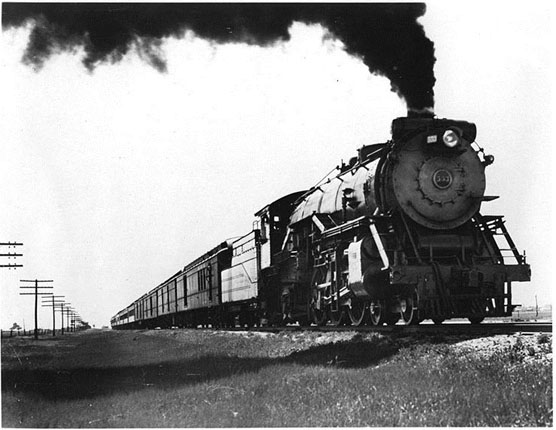
Source: Forth Worth and Denver Railway-Colorado Special 1929, Wikimedia
Industrialization of Europe quickly made railways essential for the movement of goods and labor needed for industrialization. In the beginning, canals competed with railroads, but the railroads quickly gained ground as steam and rail technology improved. In addition, railroads could be built in places where canals were not practical, thus making railways the transportation of choice.
Look at the picture below of the steam locomotive. What do you notice about the possible environmental impact of this type of widely used technology? Record your thoughts in your notes.


![]() Now, study the political cartoon below. Using your notes, reflect on your impressions of the social and environmental effects of steam power and the industrial revolution. It will be helpful to study the image in four quadrants. You may also use any notes from previous activities to help you with your reflection.
Now, study the political cartoon below. Using your notes, reflect on your impressions of the social and environmental effects of steam power and the industrial revolution. It will be helpful to study the image in four quadrants. You may also use any notes from previous activities to help you with your reflection.
